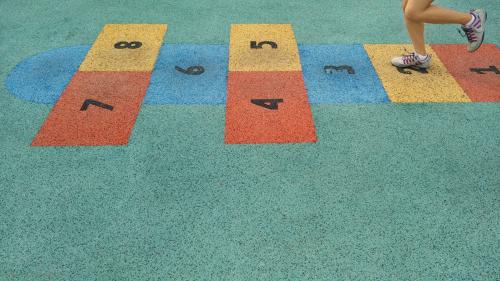Editor’s Note: This article originally appeared in the April 2012 issue of Monthly Developments Magazine.
Over the past decade, the international aid community has grown both in size and in diversity. Among its new members are various new NGOs from the Global North and South, mega-philanthropists, vertical funds, social enterprises and corporations. The newcomers that have drawn most attention, however, are emerging donors: countries transitioning from recipients to providers of aid.
Data on the scale of emerging donors’ aid programs are sketchy, but it is clear their levels are quickly growing. Best estimates indicate that these donors currently disburse $10-15 billion of aid per year, or 7-10 percent of global official aid. In contrast to traditional donors whose aid volume is expected to stay flat over the medium term, total aid from emerging donors is forecast to double in the next five years.
The rise of emerging donors is not a new phenomenon. Many of these countries have longstanding aid programs. For instance, both China and India began giving aid in the 1950s. Moreover, today’s emerging donors are not the first countries to “graduate” from their former aid relationships. Countries such as Germany, Japan and South Korea, which are now members of the traditional donor club, the Development Assistance Committee of the Organisation for Economic Co-operation and Development (OECD DAC), each have a history as aid recipients.
Yet this time is different. The recent growth of emerging donors cannot be disassociated from the broader global trend of economic weight shifting away from advanced to developing countries, and the growing role of regional economic powers. For recipients, the rising prominence of aid from emerging donors has coincided with a greater reliance on these same countries for trade, investment and driving global growth. Furthermore, while some emerging donors (such as those from Eastern Europe) are following in the footsteps of Germany, Japan and South Korea by falling into rank behind traditional donors, others seem intent on blazing a different trail.
The arrival of emerging donors brings obvious benefits, not least the potential of additional resources and ideas for development. However, it also creates two challenges for the global aid system. Understanding these challenges and identifying how they can be resolved is key to improving trust and advancing reform within the international aid system.
First, emerging donors risk undermining donor norms and international efforts to improve aid effectiveness. While practices vary from donor to donor—and the differences between emerging and traditional donors are often exaggerated—emerging donors are perceived as showing less regard for environmental and labor standards, the democratic credentials of recipient governments, and the sustainability of recipients’ debts. Each of these actions imposes a moral hazard on recipients. Emerging donors have also, until recently, stayed outside OECD DAC-led agreements to improve the quality of aid. This has, in theory, made it more difficult to address issues that rely on coordinated action across all donors, such as reducing aid volatility, agreeing a division of labor and untying aid.
These problems are serious, but must be weighed up against the positive contribution emerging donors have made by challenging Western orthodoxy. By delivering aid that is deliberately deferential to recipient demands, low-cost and quickly administered, and explicitly framed as being of benefit to both donor and recipient, emerging donors have provided an alternative interpretation of the effectiveness principles of ownership, managing for results and mutual accountability, and encouraged traditional donors to reexamine their approach.
At the recent High Level Forum on Aid Effectiveness in Busan, traditional donors succeeded in persuading emerging donors to sign up to a new global partnership. Securing their participation was rightly seen as crucial to the credibility of a new international framework and a necessary condition for taking forward efforts to improve effective development cooperation.
According to insider reports, the negotiations of the agreement were hard fought and required last gasp interventions from various countries to keep the emerging donors satisfied. Indeed, the wording of the agreement stresses the differences in “nature, modalities and responsibilities” between traditional and emerging donors, and the voluntary basis on which emerging donors will abide by agreed principles, commitments and actions.
Nevertheless, these concessions are surely justified and simply make explicit the complex realities of placing two very different aid models under a common agreement. Moreover, contrary to fears that a “big tent” approach might stifle meaningful progress on improving aid effectiveness due to a lack of consensus among members, it might well achieve the opposite result. The establishment of so-called “building blocks” under the global partnership will allow coalitions of select donors, recipients and other stakeholders within the partnership to pursue effectiveness issues on which they find common ground and a shared interest. The extent to which emerging donors participate in these building blocks may therefore be the truest test of whether the global partnership succeeds.
The second challenge associated with the rise of emerging donors is the blurring of lines between traditional donor and recipient roles and the complications this brings for how aid should be allocated across countries.
Aid relationships have traditionally been framed as charitable acts in which donors are perceived as enlightened guardians bestowing favor on those less fortunate. But when recipients can afford the luxury of their own aid programs, the charitable motive seems ill-fitting.
Recipient aid programs also serve as an inconvenient reminder of the fungibility of aid: the possibility that aid spending frees up recipient governments’ resources, which can then be allocated at their discretion. Complaints about fungibility are normally loudest when recipient governments commit a large share of their budgets to military spending or fritter away their revenues on presidential jets and palaces, yet they also resonate when recipients give away aid themselves. Irrespective of whether a causal chain exists, stakeholders in traditional donor countries view their aid as enabling a different aid program over which they have no say or influence.
Moreover, the decision by some aid recipients to devote money to supporting development overseas is perceived as betraying a lack of seriousness about their own development needs. Today there exist around a dozen emerging donors—including Brazil, China, India, South Africa, Turkey and Venezuela—that continue to receive development aid. Many of these countries face severe development challenges and contain large numbers of poor people. Indeed, approximately two-fifths of the world’s extreme poor (those living on less than $1.25 a day) can be found in these countries.
A more balanced view would acknowledge that the binding constraint to poverty elimination in these countries is not the scale of public financial resources. Each of their governments has the financial firepower to end extreme poverty within their borders; a social safety net program could theoretically be put in place to lift their poor above the poverty line, costing only a modest fraction of existing levels of public expenditure. Instead there are other limiting factors that inhibit progress on reducing poverty: bad governance, low administrative capacity and other constraints donors might be able to help alleviate.
The recent uproar in the U.K. over its aid program to India demonstrates the difficulty of convincing taxpayers and politicians of the value of giving aid to countries that are also aid providers. It also highlights a broader challenge in reconciling contrasting images of emerging economies. Thus India is portrayed both as a rising global power with its own space program, a nuclear program and home to 55 billionaires (compared to the U.K.’s 33); and as a country plagued by weak governance and prone to violent conflict, where millions remain malnourished. Both of these images are equally accurate, but only the latter is compatible with Western ideas of what a worthy aid recipient should look like.
It is time for aid relationships to evolve beyond their current conception of rigid donor and recipient roles and a narrow focus on money, towards a model where aid is viewed more as a free exchange involving both money and knowledge.
Triangular cooperation offers a promising example of how modern aid relationships can work in practice, and in a manner that encourages traditional and emerging donors to recognize and draw on each other’s strengths. In these arrangements, traditional donors serve as financiers or brokers between two developing nations: one of whom seeks to impart its experience and ideas, and another who is eager to learn. Thus, in recent months India has been a recipient of advice from Brazil on improving a social protection scheme in Delhi, and a provider of expertise on information technology and outsourcing to eight African countries, both through initiatives sponsored by the World Bank.
Through efforts such as these and through their active participation in the new global partnership agreed at Busan, emerging donors can come to play a critical role both in supporting international development and in driving positive change within the international aid community.



Commentary
New in Town: A Look at the Role of Emerging Donors in an Evolving Aid System
April 16, 2012